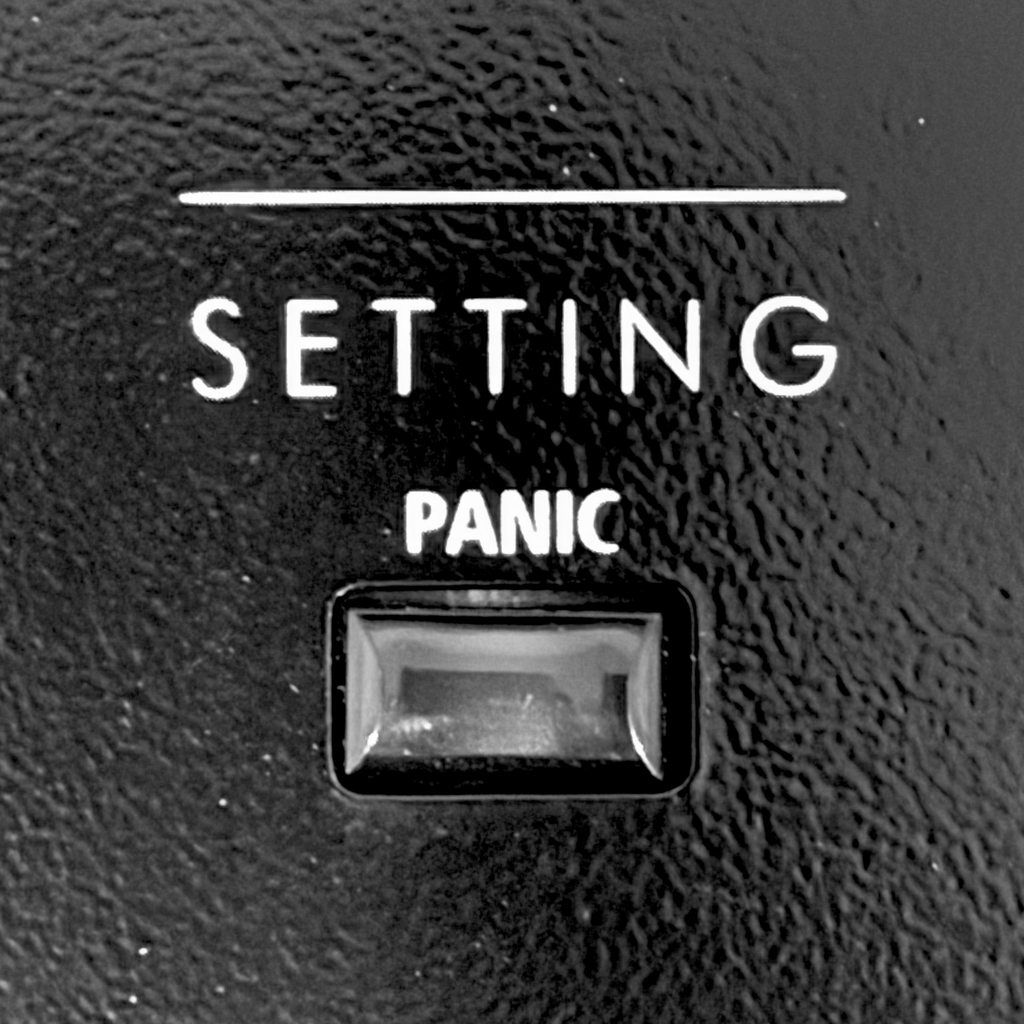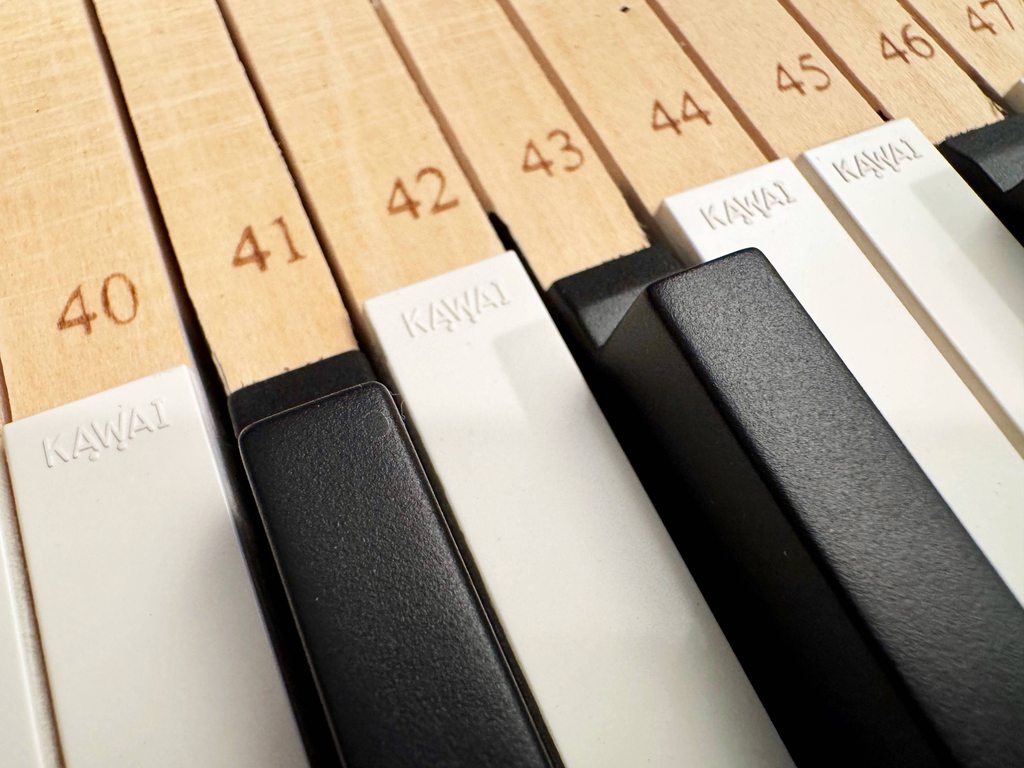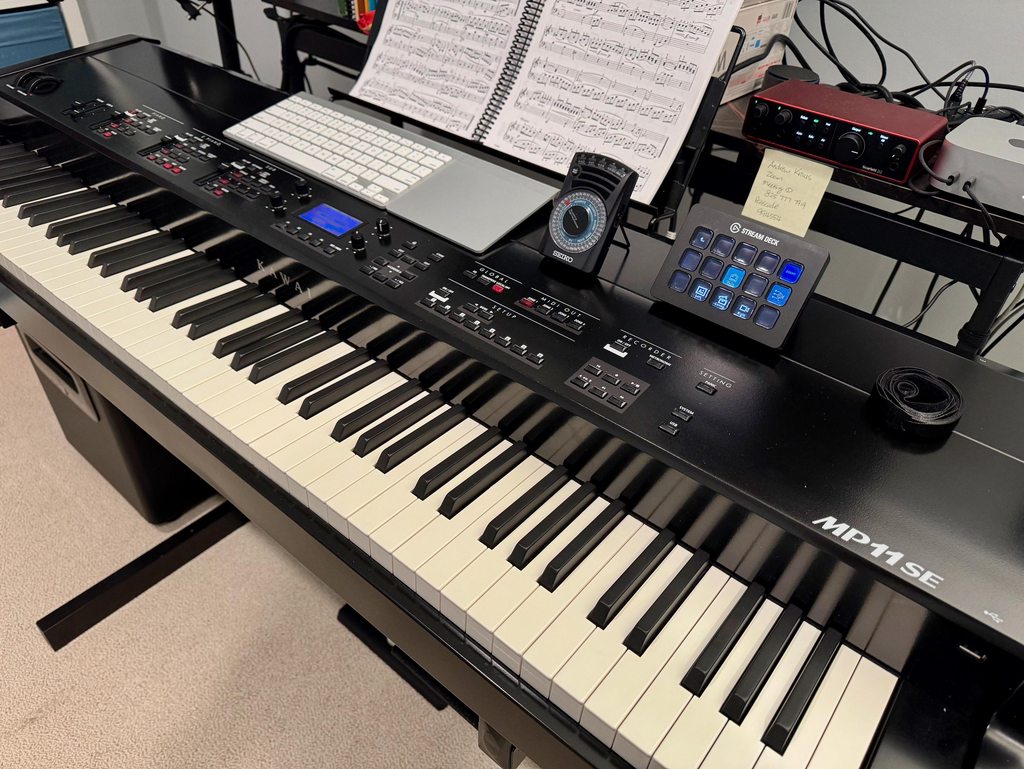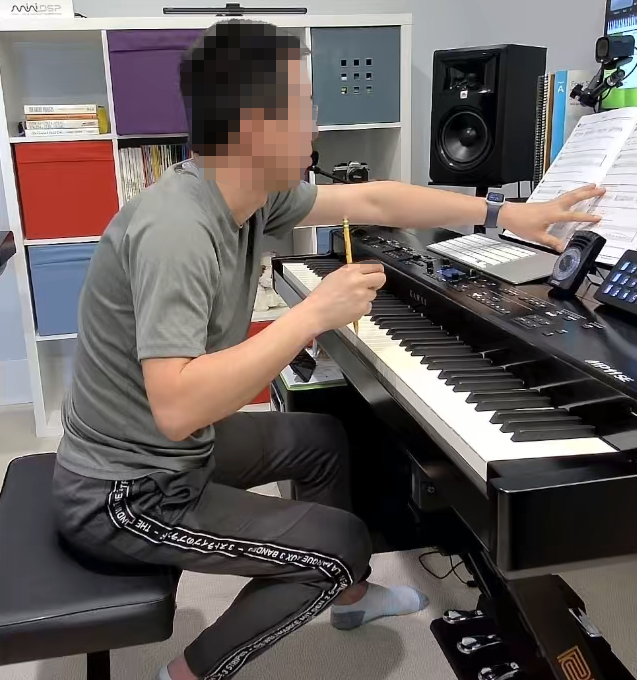Since my teacher is encouraging me to play more inward (closer to fall board) on and between the keys, I have been thinking about upgrading my DP. My investigation into pivot length lead to the conclusion that the Kawai MP11SE is probably the closest to a grand action in a slab DP. However, US price is so expensive. So I’ve been scouring second hand market for one. Last week, one popup on Reverb.com in excellent condition by a highly rated seller at great price. I jumped on it.
It arrived well-packaged in original box. Boy! This thing is heavy! I had to get my neighbor to help carrying the box up the stairs.
After setting it up on my stand, I was dismayed to find a number of keys in the middle register seems to be stuck. There are so much friction on some key that they wouldn’t come up once pushed down. What a bummer!

Reverb has good return policy. Still it will be a huge hassle to repack this beast and ship it back. Maybe I can try to figure if the keys can be fixed? There are plenty of YouTube videos on how to fix the slip tape issue. I followed one to open the cover. And voila! The keys magically unstuck themselves and work beautifully. Putting the cover back on and they still work fine. Now I began to regret not taking a video of the stuck keys for historical document. So the problem does not appear to be misfit or overtightened cover. After examining the action mechanism, the only possible reason I could think of is if the box was transported upside-down, and the hammer dropped past its normal upmost position (which could be reproduced if I take out a key stick then replace it).
Whew! Now some first impressions.
The key bed bottom feels softer than my Roland. The black key is covered in a matte texture that is not slippery at all. The surface of the white key is smooth but also less slippery.

The weight near the fall board is SIGNIFICANTLY less heavy compared to the PHA-4 action in the Roland. This is the main reason of my upgrade, and it’s really worth it.
Next thing I tested is MIDI output range, since I will be using Pianoteq. Initially it is indeed difficult to get reliable MIDI value under 25. Modartt’s suggested velocity curve maps MIDI 16 to zero. I did find if I set MP11SE’s onboard Touch setting to Light (or even Light+), I could get MIDI value down to 12-16, albeit still unreliable (could be my technique). At the top end, bang the keys as hard as I can gets me MIDI 120. In the end, I settled on velocity curve that linearly maps 16-120 to 0-128.
How does the action feel? My only reference point is my Roland’s PHA-4. The Grand Feel action in MP11SE feels better. There seems to be a heft in the keys that the finger can sense. Yet, it’s not heavy at all. Weight-wise it not dissimilar to the Roland, but it also feels more responsive.
A few other things I like. This thing is built like a tank! The extra action length also give the top cover extra real estate to put my computer keyboard, track pad, metronome, stream deck, etc. There are more physical buttons than I would ever learn. But they do make changing sound and settings really easy and intuitive. The GFP-3 pedal is very nice, sturdy, and smooth. It is stiffer than the RP-10 sustain pedal, allowing me to fully rest my foot on the sustain pedal.

There is one thing I do not like about the MP11SE. The music desk, although well-made in full metal and mounts securely, it is TOO FAR AWAY! From my normal playing sitting posture, I need to lean way forward to reach the bottom half of the sheet music. Forget about page turning gracefully! Also the bottom of the music desk is flat, so sheets or book bottom will slop and slide forward until stopped by the lip.
